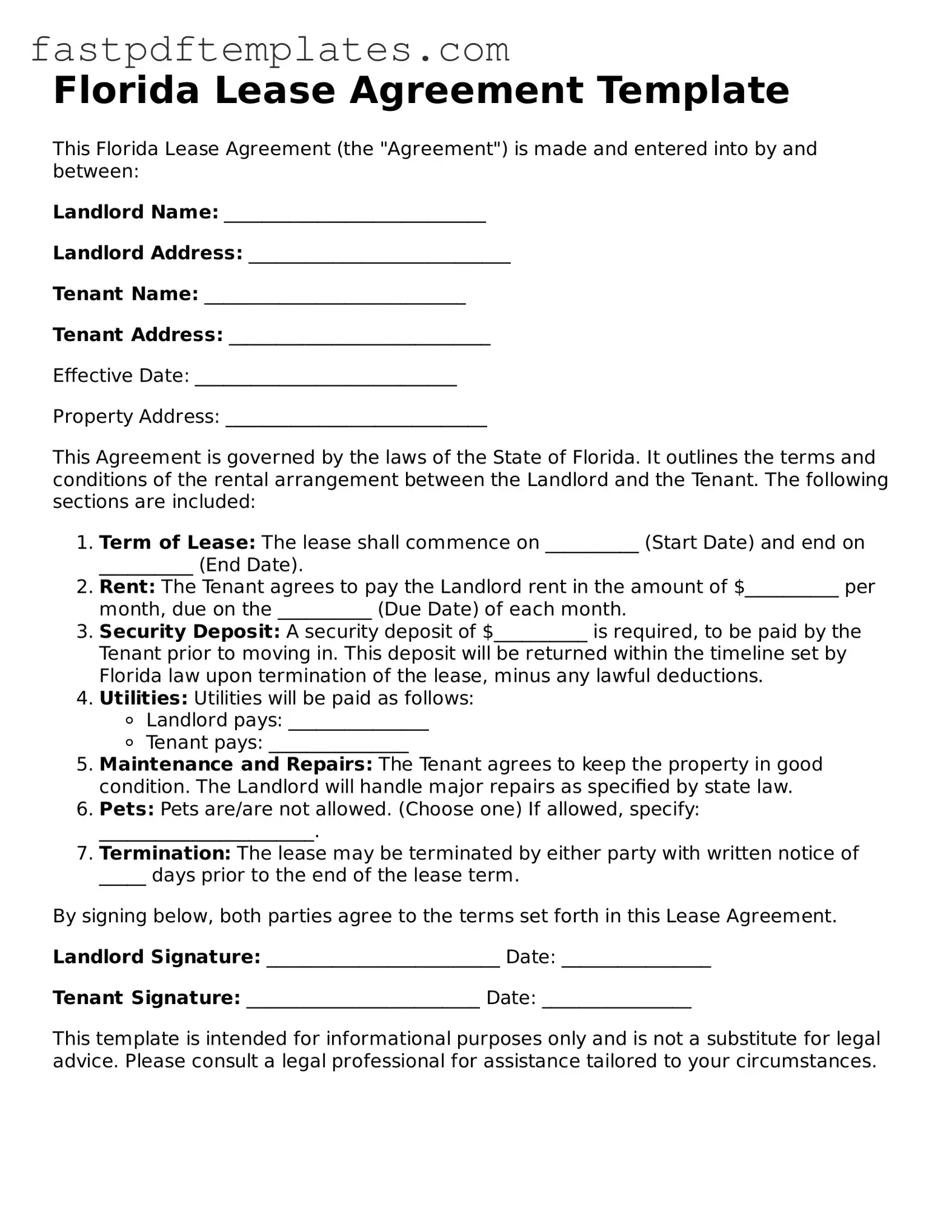Florida Lease Agreement Template
This Florida Lease Agreement (the "Agreement") is made and entered into by and between:
Landlord Name: ____________________________
Landlord Address: ____________________________
Tenant Name: ____________________________
Tenant Address: ____________________________
Effective Date: ____________________________
Property Address: ____________________________
This Agreement is governed by the laws of the State of Florida. It outlines the terms and conditions of the rental arrangement between the Landlord and the Tenant. The following sections are included:
- Term of Lease: The lease shall commence on __________ (Start Date) and end on __________ (End Date).
- Rent: The Tenant agrees to pay the Landlord rent in the amount of $__________ per month, due on the __________ (Due Date) of each month.
- Security Deposit: A security deposit of $__________ is required, to be paid by the Tenant prior to moving in. This deposit will be returned within the timeline set by Florida law upon termination of the lease, minus any lawful deductions.
- Utilities: Utilities will be paid as follows:
- Landlord pays: _______________
- Tenant pays: _______________
- Maintenance and Repairs: The Tenant agrees to keep the property in good condition. The Landlord will handle major repairs as specified by state law.
- Pets: Pets are/are not allowed. (Choose one) If allowed, specify: _______________________.
- Termination: The lease may be terminated by either party with written notice of _____ days prior to the end of the lease term.
By signing below, both parties agree to the terms set forth in this Lease Agreement.
Landlord Signature: _________________________ Date: ________________
Tenant Signature: _________________________ Date: ________________
This template is intended for informational purposes only and is not a substitute for legal advice. Please consult a legal professional for assistance tailored to your circumstances.
